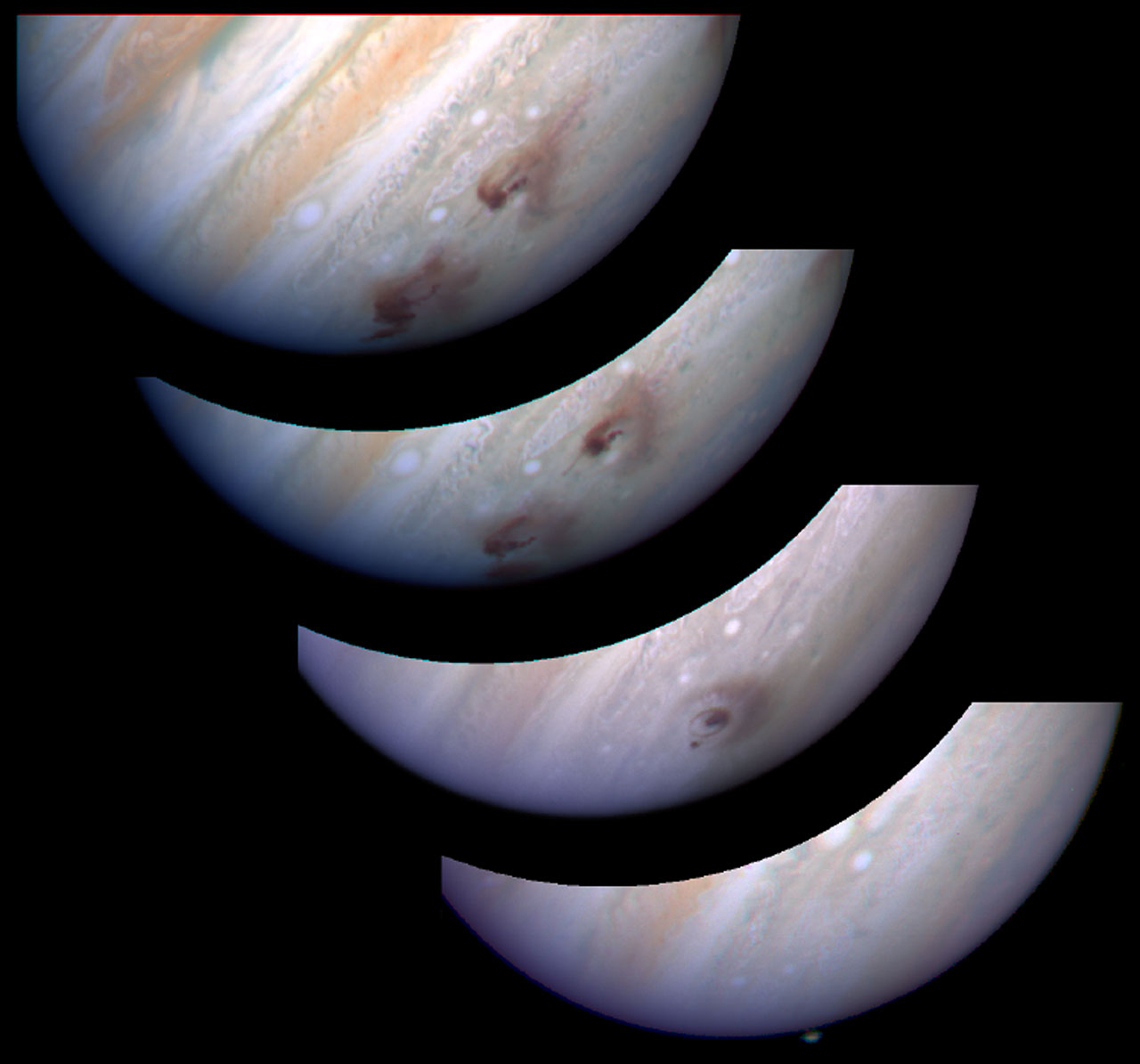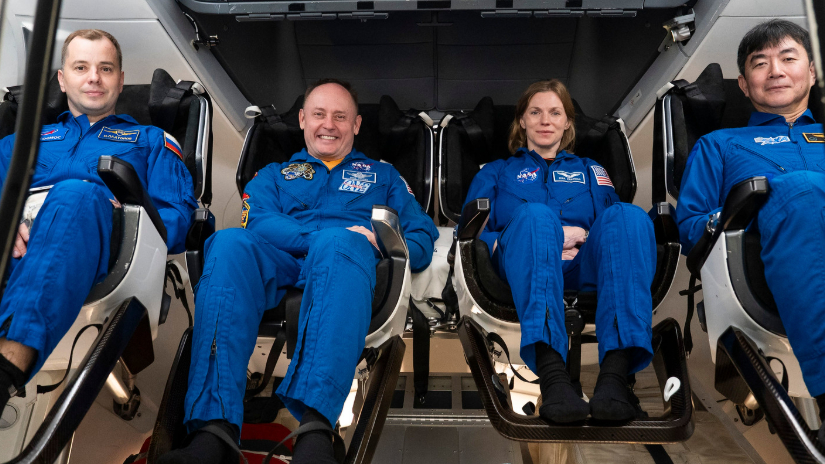Shoemaker-Levy 9: Comet's Impact Left Its Mark on Jupiter
Comet Shoemaker-Levy 9 experienced one of the most spectacular ends that humans ever witnessed. Several months after its discovery, pieces of the comet smashed into the planet Jupiter. The collision produced scars that were visible from Earth.
"This is the first collision of two solar system bodies ever to be observed, and the effects of the comet impacts on Jupiter's atmosphere have been simply spectacular and beyond expectations," NASA wrote on a website describing the comet.

The comet, which struck Jupiter in 1994, brought the dangers of asteroid and comet collisions with Earth to the public fore. In the late 1990s, Hollywood unleashed two blockbuster films — "Armageddon" and "Deep Impact" — on the theme of large objects threatening Earth.
After the release of these films, Congress authorized NASA to seek more near-Earth objects (NEOs) to better monitor those that come cruising close to our planet. In 2013, a small asteroid broke up over the remote city of Chelyabinsk, Russia, injuring hundreds and causing property damage. This event also spurred research and interest into NEOs.
NEO searches continue to this day. NASA implemented a Planetary Defense Coordination Office in 2016 to better coordinate work by NASA officials, their international counterparts and the various telescopes that monitor the sky for potentially dangerous asteroids and comets. To date, there is no definitive evidence of an object that will hit Earth and cause catastrophe — but scientists keep looking, just in case. [Related: Meteor Blast over Russia Feb. 15, 2013: Complete Coverage]
The first known Jupiter-orbiting comet
Shoemaker-Levy 9 was first spotted in March 1993 by three veteran comet discoverers: Eugene and Carolyn Shoemaker, and David Levy. The group had collaborated several times before and discovered several other comets before this one, which is why this comet was called Shoemaker-Levy 9.
A March circular from the International Astronomical Union Central Bureau for Astronomical Telegrams contained a casual reference to the comet's position: "The comet is located some 4 degrees from Jupiter, and the motion suggests that it may be near Jupiter's distance."
As the months progressed, it was clear that the comet was actually orbiting Jupiter and not the sun. Astronomer Steve Fentress suggested the comet broke up on July 7, 1992, when it whipped by Jupiter roughly 74,600 miles (120,000 km) above its atmosphere. (Accounts vary, with some sources saying the comet passed as close as 15,534 miles, or 25,000 km.)
But the comet was probably orbiting Jupiter for decades before that, perhaps as early as 1966 when it got captured by the massive planet's gravity.
Further orbital calculations showed the comet would actually crash into Jupiter in July 1994. The spacecraft Galileo, scheduled to orbit Jupiter, was still en route to the planet at the time and would not be able to get a close-up view.
Observatories around the world, however, prepared to turn their attention to the planet, expecting a spectacular show. The orbiting Hubble Space Telescope also was tapped to observe the encounter.
"For comet experts and planetary specialists around the world, this may be the most important event of their careers, because of the discoveries they may make about the nature of comets and the makeup of Jupiter's atmosphere and magnetosphere," NASA wrote prior to the event.
"This knowledge may help them explain similar high-energy events on Earth."
Watching the fireworks
The collisions ended up being a multi-day extravaganza. From July 16 to 22, 1994, 21 separate fragments of the comet smashed into Jupiter's atmosphere, leaving blotches behind.
Although all of the collisions took place on the side of Jupiter facing away from Earth, they generally occurred fairly close to the morning "terminator", or the location on Jupiter that was shortly moving within sight of Earth. This meant that telescopes saw some impact sites just minutes after the event.
Jupiter's bright surface was now dotted with smudges from where the comet smashed through the atmosphere. Astronomers using Hubble were surprised to see "sulfur-bearing compounds" such as hydrogen sulfide, as well as ammonia, as a result of the collision.
A month after the collision, the sites were noticeably faded, and Hubble scientists declared that Jupiter's atmosphere would have no permanent change from the impacts.
"Hubble's ultraviolet observations show the motion of very fine impact debris particles now suspended high in Jupiter's atmosphere," NASA added in a release.
"The debris eventually will diffuse down to lower altitudes. This provides the first information ever obtained about Jupiter's high altitude wind patterns."
Ripple effects
The impact scars disappeared many years ago, but at least one group of scientists has recently detected a change in Jupiter's environment because of Shoemaker-Levy 9.
When Galileo arrived at Jupiter, the spacecraft imaged ripples in Jupiter's main ring in 1996 and 2000. Also, the entire ring tilted in 1994 by about 1.24 miles (two kilometers) following the impact.
In 2011 – nearly two decades after the impact – the Pluto-bound New Horizons spacecraft still was detecting disturbances in the ring, according to a paper in the journal Science. "Impacts by comets or their dust streams are regular occurrences in planetary rings, altering them in ways that remain detectable decades later," the researchers wrote in their abstract. Water from the Shoemaker-Levy 9 impact was still in Jupiter's atmosphere as late as 2013, according to observations from the European Herschel space observatory.
Astronomers know today that impacts on Jupiter are fairly common. In the decades after Shoemaker-Levy 9, photography technology improved immensely and allowed amateurs to take regular images and video of Jupiter at high resolution. (Professional astronomers are limited by telescope time and funding, so the amateurs provide a useful source of information for planetary observations.) Many amateurs witnessed impacts in the past few years, including in 2009, 2010 (twice), 2012 and 2016. An impact flash was also reported in 2017, according to Sky and Telescope.
Another celestial event sparked conversations again about NEOs in 2013, when an asteroid exploded over Chelyabinsk, Russia. The asteroid was roughly 56 feet (17 meters) in diameter and caused an explosion that was said to be 30 to 40 times stronger than the atomic bomb dropped on Hiroshima, Japan during the Second World War. The event drew international attention and concern from scientists, the public and politicians.
Policy changes
Political effects also came to pass in the decades after Shoemaker-Levy 9, as politicians sought to figure out how many large extraterrestrial objects lurk near Earth. In 1998, Congress mandated that NASA seek out at least 90 percent of the asteroids near the planet that are 0.62 miles (1 kilometer) in diameter. As of 2011, NASA had found more than 90 percent of the biggest asteroids lurking near Earth, the agency announced. A survey using the Wide-field Infrared Survey Explorer suggested that there were actually fewer asteroids lurking near our planet than previously feared.
"Astronomers now estimate there are roughly 19,500 – not 35,000 – mid-size near-Earth asteroids. Scientists say this improved understanding of the population may indicate the hazard to Earth could be somewhat less than previously thought," NASA wrote. "However, the majority of these mid-size asteroids remain to be discovered."
In 2005, representatives refined the search to order that by 2020, NASA find 90 percent of NEOs that are 459 feet (140 meters) wide or larger – a threshold considered to pose a large threat to Earth. [Video: NEOs: The Video Show]
As early as 2010, however, the National Research Council said NASA's search was not comprehensive enough to reach that goal in time. A 2014 follow-up report by NASA's Office of the Inspector General confirmed that.
"Even with a ten-fold increase in the NEO Program budget in the past 5 years – from $4 million in fiscal year (FY) 2009 to $40 million in FY 2014 – NASA estimates that it has identified only about 10 percent of all asteroids 140 meters and larger," the OIG wrote in 2014. The OIG recommended adding personnel and a management plan (including milestones, objectives and cost/schedule estimates) to improve.
In 2016, NASA established a Planetary Defense Coordination Office that centralizes NEO searches and coordinates the effort of NASA, the telescope survey teams that search for NEOs, and other government agencies that have an interest in the nation's security and safety. The office has four objectives, in the words of NASA:
- Ensuring the early detection of potentially hazardous objects (PHOs) – asteroids and comets whose orbits are predicted to bring them within 0.05 astronomical units [Sun-Earth distances] of Earth; and of a size large enough to reach Earth's surface – that is, greater than approximately 30 to 50 meters;
- Tracking and characterizing PHOs and issuing warnings about potential impacts;
- Providing timely and accurate communications about PHOs; and
- Leading the coordination of U.S. Government planning for response to an actual impact threat.
Join our Space Forums to keep talking space on the latest missions, night sky and more! And if you have a news tip, correction or comment, let us know at: community@space.com.
Breaking space news, the latest updates on rocket launches, skywatching events and more!

Elizabeth Howell (she/her), Ph.D., was a staff writer in the spaceflight channel between 2022 and 2024 specializing in Canadian space news. She was contributing writer for Space.com for 10 years from 2012 to 2024. Elizabeth's reporting includes multiple exclusives with the White House, leading world coverage about a lost-and-found space tomato on the International Space Station, witnessing five human spaceflight launches on two continents, flying parabolic, working inside a spacesuit, and participating in a simulated Mars mission. Her latest book, "Why Am I Taller?" (ECW Press, 2022) is co-written with astronaut Dave Williams.
